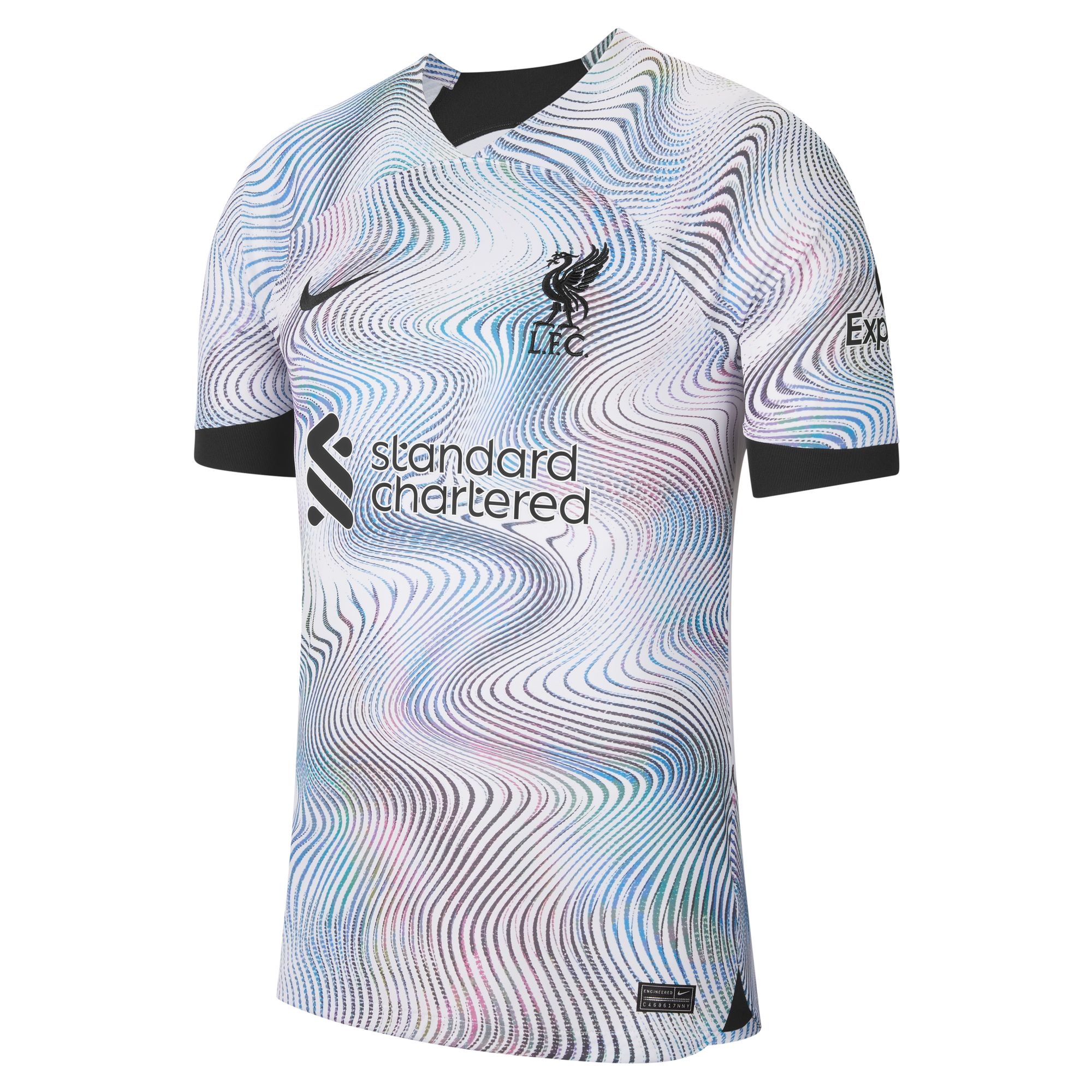Liverpool white jersey: A seemingly simple piece of fabric, yet it holds a rich history interwoven with the club’s triumphs and tribulations. From classic designs to modern iterations, the white kit has witnessed legendary matches and evolved alongside the club’s identity. This exploration delves into the evolution of Liverpool’s white jerseys, examining their design elements, fan reception, and place within modern football culture.
We’ll trace the evolution of the jersey’s design, from its earliest iterations to the current day, highlighting key changes in sponsors, collar styles, and overall aesthetics. We’ll also examine the symbolic significance of the color white for Liverpool, exploring its connection to the club’s history and identity. The analysis will include fan perspectives, exploring their opinions on different designs and the cultural impact of the white kit.
Liverpool’s White Jersey: A History and Cultural Impact: Liverpool White Jersey
Liverpool’s white kit, while not as prominently featured as their iconic red, holds a significant place in the club’s history and the hearts of its fans. This exploration delves into the evolution of the white jersey, its design elements, fan reception, its role in modern football culture, and the manufacturing process behind it.
Historical Overview of Liverpool White Jerseys
Liverpool’s use of white jerseys throughout their history has been sporadic, often appearing as alternate kits or for specific occasions. These kits have undergone significant design changes reflecting the evolving styles of football apparel and sponsorship deals.
Notable matches where Liverpool donned the white kit include several FA Cup finals and European ties. The specific significance of each game varies, ranging from upset victories to heartbreaking defeats, all adding to the rich tapestry of Liverpool’s history.
| Year | Design Features | Sponsor | Notable Match |
|---|---|---|---|
| 1970s (Example) | Simple design, possibly a round neck, minimal branding | No major sponsor (likely) | FA Cup Final appearance (Example) |
| 1980s (Example) | Possibly featuring a v-neck, introduction of a sponsor logo | Example Sponsor (e.g., Hitachi) | European Cup match (Example) |
| 2000s (Example) | Modern design, possibly featuring a more athletic fit, intricate detailing | Example Sponsor (e.g., Carlsberg) | Premier League match against a rival (Example) |
Design Elements of the Liverpool White Jersey
Liverpool’s white jerseys typically feature a clean, classic design. Variations in collar styles, from crew necks to v-necks, have been seen throughout the years. The Liver Bird logo, a central element of the club’s identity, is always prominently displayed, along with the sponsor’s logo and the manufacturer’s branding (e.g., Nike, Adidas).
When investigating detailed guidance, check out 512×512 logo manchester city now.
Comparing a modern white jersey to a historical one reveals a shift towards more athletic fits, the incorporation of advanced materials, and a more streamlined aesthetic. The symbolic meaning of white often represents purity, simplicity, and a clean slate, although in the context of Liverpool’s identity it might represent a secondary or alternative representation of the club.
Fan Reception and Cultural Impact of the White Kit, Liverpool white jersey

Liverpool’s white kits enjoy a dedicated following among fans. Many appreciate the classic look, finding it a refreshing alternative to the traditional red. The white jersey often evokes a sense of nostalgia and is associated with specific memorable matches.
Fan-created content, including artwork, social media posts, and even fan-made jersey designs, showcase the enduring appeal of the white kit. Reasons for preferring or disliking the white kit compared to the red are varied; some prefer the clean aesthetic, while others remain loyal to the club’s iconic red.
- Preference for a classic, timeless design.
- Association with specific memorable matches.
- A sense of rarity compared to the red kit.
- A preference for the traditional red as the primary kit.
- A belief that the white kit doesn’t fully represent the club’s identity.
The White Jersey in Modern Football Culture
Liverpool’s white jersey can be compared to other prominent white kits from clubs like Real Madrid or Bayern Munich, all sharing a similar classic aesthetic but with unique design elements reflecting their respective club identities. The white kit plays a significant role in Liverpool’s merchandising and marketing strategies, offering fans an alternative choice alongside the primary red kit.
A hypothetical improvement to a future Liverpool white jersey could involve incorporating subtle design elements inspired by the city of Liverpool’s architecture or history. For example, a textured pattern subtly woven into the fabric, inspired by the brickwork of iconic Liverpool buildings, could add a unique touch while maintaining the classic elegance of a white kit.
The Manufacturing and Materials of the Liverpool White Jersey
Liverpool’s white jerseys are typically manufactured using high-performance polyester fabrics, chosen for their breathability, moisture-wicking properties, and durability. Sustainability considerations are increasingly important, with manufacturers exploring more eco-friendly materials and production processes.
A simplified infographic describing the manufacturing process might include stages such as: design and pattern creation, fabric sourcing and cutting, stitching and assembly, quality control, and finally, packaging and distribution. The infographic would visually represent each stage with short descriptions highlighting the use of sustainable materials and ethical labor practices wherever possible.
From its historical significance to its modern-day impact, the Liverpool white jersey stands as more than just a uniform; it’s a symbol of the club’s heritage and a testament to its enduring connection with its passionate fanbase. The journey through its evolution reveals a story of design innovation, fan loyalty, and the enduring power of a simple yet iconic kit.

